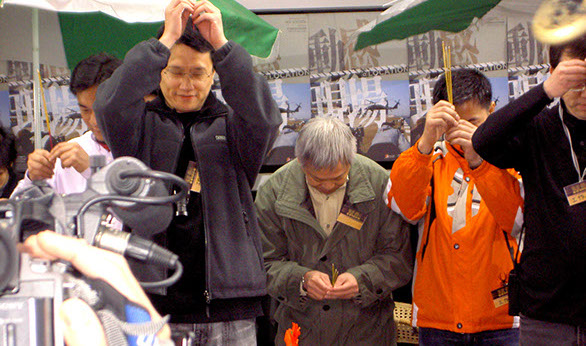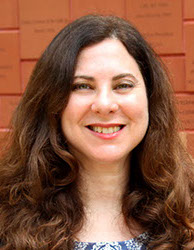The film and television industries can be ruthless about the bottom line, but there is one expense they seemingly pay without question: the fortune teller’s fee.
In Hong Kong, Bak Lung Wong, or White Dragon King, who died in 2013, was often asked to give his blessing to films such as Infernal Affairs. In Hollywood astrologer Joyce Jillson was on the payroll of Twentieth Century Fox Studios and helped to pick the opening date for, among other films, Star Wars in 1977.
Call it superstition or religion or, as some anthropologists prefer, enchantment, such beliefs and cultural practices are quite common in modern-day production, as Dr Sylvia J Martin discovered in her years researching on sets in Hong Kong and Hollywood.
Her interest in this area can be seen in the courses she teaches in the Department of Sociology, which include anthropology and modern culture and lifestyles, among others.
She started her research in 2003 by arranging an internship with the production company of a major Hollywood studio that allowed her to observe the happenings on set, where she spent hundreds of hours developing relationships and interviewing industry workers. To broaden her perspective, she also extended her research to Hong Kong.
“I started noticing death was a big story theme and the experience of filming death scenes or performing dangerous, death-defying stunts stayed with a lot of these media workers, not just actors but stunt workers, directors, camera operators, make-up artists – anyone involved in the production of the image,” she said.
![]() There’s this idea that audience members’ lives might be changed in some way by watching a powerful film or TV show, but the work of making these products can also transform the workers, whether they’re a prestigious director or a carpenter.
There’s this idea that audience members’ lives might be changed in some way by watching a powerful film or TV show, but the work of making these products can also transform the workers, whether they’re a prestigious director or a carpenter. ![]()
Dr Sylvia J Martin
Impacts behind the scenes
“The studios like to put out a mostly secular narrative,” she said. “And a lot of motion picture industries’ scholarship focusses on the economics of media production and also assumes a rational secular world. But when you talk to people, you find it’s a little more complicated than that. The assumption is not necessarily the reality for the people who perform the work.
“I’m interested in how their behaviours become patterned cultural practices that impact film schedules, economics, how people relate to one another, how people understand the material they are working with.”
And how it affects their relationship to their work. For example, director Steven Spielberg told an interviewer that he could not work for months after completing Schindler’s List because he was so depressed by the content.
“There’s this idea that audience members’ lives might be changed in some way by watching a powerful film or TV show, but the work of making these products can also transform the workers, whether they’re a prestigious director or a carpenter,” Dr Martin said. “We’re not untouched by our work.”
Adding a poignant backdrop to her work was the parallel decline of both Hong Kong and Hollywood as centres of production. A lot of the work has been offshored or outsourced – in the case of Hollywood to other American states or Canada, and in the case of Hong Kong to Mainland China. Dr Martin said there was no causal relationship with death and dying themes but it adds an extra layer to the story of globalisation and how personal and cultural practices persist.
Haunted: An Ethnography of the Hollywood and Hong Kong Media Industries was published by Oxford University in autumn 2016.
Incense and medallions
How media workers coped with these situations is one of the foci of her new book, Haunted: An Ethnography of the Hollywood and Hong Kong Media Industries. “Death and dying are very powerful narratives and in both places there are engagements with various forms of enchantment,” she said.
For instance, in Hong Kong the actors or stunt workers involved in death scenes are commonly given lai see [red packets] by the producer as acknowledgement and compensation for this work. Incense burnings and other offerings are sometimes made on set, especially at the start of a new film to solicit auspicious fortune. Not everyone believes in these practices, but they are generally accepted as part of the business of making film and television productions, she said.
In Hollywood, enchantment practices are less publicly ritualised, and less formal, but Dr Martin encountered a number of actors who wore religious medallions under their costumes, and collected icons of St Clare of Assisi, the patron saint of television. One film worker wrote bible verses on scraps of paper and stuffed them under his clothing. Studios have for decades observed avoidance beliefs: the number 13 is considered so unlucky that the Universal Studios backlot does not use even multiples of 13 in numbering its sets.
Performers also use the language of being haunted to describe their experiences when filming death-related scenes – of being ‘possessed’ by their character or having to ‘exorcise’ the character at the end of filming.
Incense burnings made on set has become a commonly seen cultural practice taken place at the start of a new film to solicit auspicious fortune.

THE HAUNTED LIFE ON SET
Workers on film and television sets are often faced with stories about death and dying. Their real lives are not untouched by these encounters, as Dr Sylvia J Martin of the Department of Sociology reports in her new book about the Hollywood and Hong Kong media industries.





